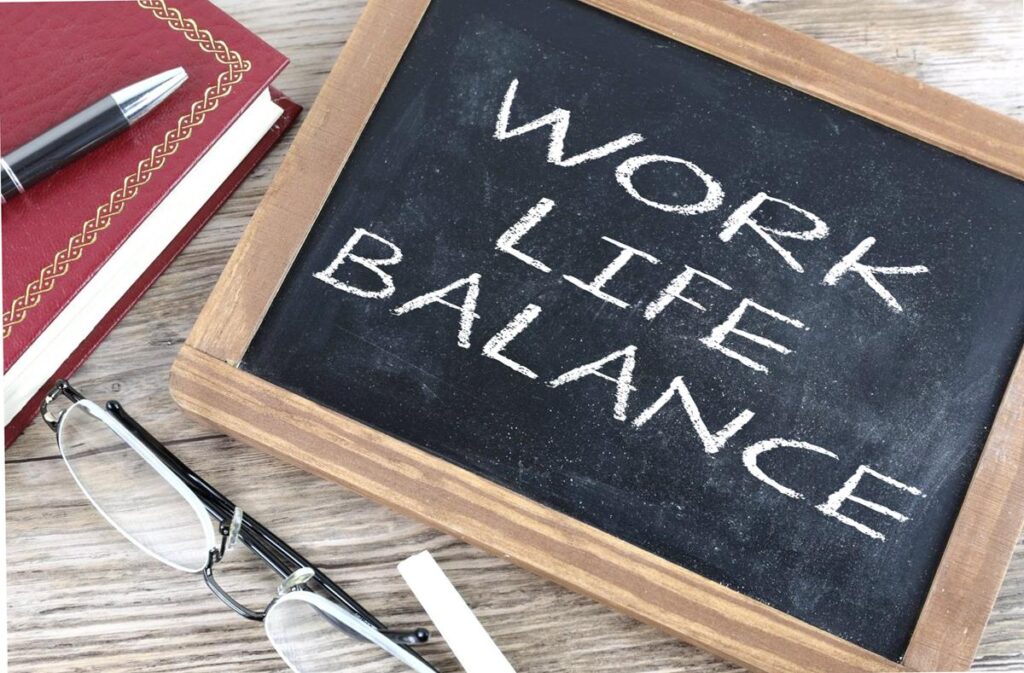
Some people will not rest until they have become multimillionaires and have their dream home (white picket fence included). Meanwhile, some of us will be content if we can merely solve the perplexing puzzle of how to reconcile work and life.
This piece is for you, my buddy, if you’re in the second camp.
Whether you’re fresh to the workforce or a seasoned pro, achieving work-life balance is likely a challenge for you. Even though I’ve been working for eight years, I still feel like a novice at times.
The good news is that if you put out a genuine effort and try until you find what works best for you, it will become easier.
Imagine yourself as Frodo from Lord of the Rings or Arya Stark from Game of Thrones on an epic journey. This is going to be a lot more enjoyable.
We’ll look at eight work-life balance tips to help you along the road. I recommend giving them a try for at least a few days; you might be surprised at what stays and what doesn’t.
Your journey starts right now.
Prioritize the items on your personal and professional to-do lists.
When managing work and family, this is a very normal occurrence: you start your day with a list of personal and professional obligations that you expect to do.
You get through the first couple of hours of the day without incident, but then you’re bombarded with emails and phone calls. Then a family member approaches you for assistance, or your child has a tantrum. Then there’s putting out a fire at work.
You can be halfway through your mental to-do list at the end of the day, wondering where the time went.
Making two separate lists, one for work and one for personal life, is an excellent method for avoiding this. Make a list of everything you can think of that needs to be accomplished today, or even this week.
Then, sort the list by importance and urgency, placing items in categories one through three, with one being the most important and three being the least important.
You can start each day with at least one or two items from the high-priority category in this manner. Before the inevitable distractions get in the way, you’ll be able to do the most critical chores first.
Keep a self-accountability calendar.
Consider this a follow-up to the preceding suggestion for achieving work-life balance. You’ve made a tangible list, and now it’s time to enter all of the entries into your calendar.
I’m not going to lie: My Google Calendar is my best friend. I can update it from my computer or phone, and I can have it send me reminder emails and notifications as events approach.
I may also color-code objects to make it clear which are for personal use and which are for work. Color-coding can be used for a variety of purposes, such as keeping track of when your payments are due or chores that need to be completed for different clients if you have more than one.
Keeping a precise, up-to-date calendar helps to guarantee that nothing falls between the cracks. You’ll be more conscious of how much time is going and how many tasks aren’t getting done, which helps prevent the phenomena of your entire day vanishing into thin air.
Writing everything down and scheduling it into your day provides you a lot more accountability than making a mental list. Even if you can’t avoid distractions, you’ll have a better understanding of how you spend your time. And now you’re one step closer to establishing work-life harmony.
Establish a daily time frame for checking and responding to work messages.
This is one of the most useful work-life balance suggestions I can provide you.
Because almost everyone I know who has a hard time balancing work and life has this in common: their phones and emails are constantly ringing – and they’re constantly checking and replying.
If you have a lot on your plate on any given day, this will almost surely eat up a large portion of your time.
It’s most likely having a detrimental affect on your family life as well. When you’re supposed to be spending quality time with someone else, how many times have you been chastised for being on your phone?
It’s easier said than done, but if you can confine work as much as possible inside work hours, you’ll have a tremendous advantage in the work-life balance war. Establish a time limit for responding to work messages. This might be a regular 9-to-5 job, or you might start reading messages around 10 or 11 a.m. to avoid distractions in the morning.
Turn off your notifications once you’ve completed your time window. Close your email program. Put your phone on quiet or leave it in another room while you’re eating.
Change the dynamic if your messages are controlling you. Regain control of the situation.
Focus on your strengths while delegating your flaws
It takes time to learn new things. It takes time to drag your feet to do something you despise.
Rather than overloading yourself with things you don’t enjoy or aren’t excellent at, investigate if you can transfer such responsibilities to others. This can help you reclaim a surprising amount of time from your day because you’ll be able to focus better when you’re doing activities you enjoy and can complete fast and efficiently.
It’s simple to give responsibilities to others if you’re in charge of a team at work. Try holding a team meeting to examine how things may be rearranged to fit everyone’s needs. If you’re not in a position to give commands, see if you can trade tasks or projects.
This works in a home setting as well. If your children are old enough, you can share duties or duties with your partner, or give them more of their own jobs around the house.
When you can do this, it’s also a plus for your own daily happiness and stress levels, which is a huge factor in maintaining a great work-life balance.
Acquire the Ability to Say “No”
Another risk factor for needing to improve work-life balance is being a “yes” person. You have a strong desire to please everyone, which is a wonderful character quality.
I’m not suggesting you start being a jerk to everyone who asks for help, but being a “yes” person can backfire — quickly and repeatedly.
As a result, it’s critical to be cautious about what you agree to and how often you agree. This implies that you will have to disappoint folks on occasion. (However, keep in mind that most people are likely to be less disappointed than you are.)
Saying no can feel like a Herculean task at first, but with repetition, it becomes second nature. You’ll also gain crucial interpersonal and communication skills that will help you maintain positive professional and personal connections.
It’s as simple as utilizing phrases like:
I’m sorry, but I’m unable to assist you at this time; however, if you still require assistance, I can assist you tomorrow afternoon.
Sorry, but I don’t have any more space in my schedule this week.
I really want to accompany you, but I’m afraid I’ll be fatigued.
Make the most of your vacation days.
This is not good news, to put it mildly.
There are a variety of reasons why people refuse to take paid vacations, including a great deal of pressure to perform and avoid becoming lackadaisical.
But the truth is that if you can’t take time off work to do activities you enjoy, you’ll never be able to strike a perfect balance between work and life.
You don’t even have to go on a lavish vacation or plan anything spectacular. If that’s what you want, you can just sit on your couch and binge watch reality TV in your underpants for a week.
The point is that you must “refill your cup” in order to provide more to your work and family in the long run.
You’ll eventually burn out if you’re continually on the grind. As a result, your efficiency, productivity, and even your creativity and problem-solving abilities will suffer. Your mental health will deteriorate, and you will find it difficult to give your all in both your professional and personal efforts.
Don’t let yourself get to that stage. Make the most of your vacation time.
Schedule Time for Something You Enjoy Every Day
Vacation days are simply one element of the refilling your cup formula. You’ll also need to apply this guideline on a smaller, more consistent basis.
Every day, ideally, you should do one activity that you enjoy.
Create a new physical list. Make a list of all the things you appreciate, big and small, such as:
On a tropical beach, tanning
Exploring historic ruins
You’re going to make your grandmother’s renowned lasagna.
Getting in touch with your best buddy
Cuddling with a loved one or a pet
Taking part in a card or board game
A book is being read.
You’re dancing wildly because you’re listening to that one tune.
Begin with small goals and work your way up.
I go through phases where I’m incredibly motivated, setting lofty objectives and making a slew of exciting plans for myself. But then life happens, and in a matter of weeks, that motivation fades or even vanishes (or even a few days). I find myself back where I started before I realize it.
The New Year’s Resolution that becomes a distant memory by March is a classic illustration of this. We’ve all been there, so don’t pass judgment.
It’s simple to make lofty objectives, but it’s equally simpler to fall back into old patterns. This is especially true when your huge ambitions include changing a lot of things about yourself all at once.
As a result, you should begin with one or two small objectives. You can then add a couple more modest goals if they seem like they’ve officially become habits. Then, as time goes on, you’ll be able to set your sights on broader goals that bind the tiny pieces together.




